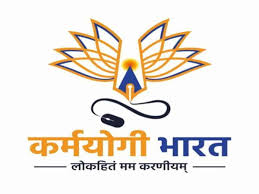Mission Karmayogi:

Indian Institute of Public Administration assessed the impact of mission karmayogi by seeking inputs on recently trained staff from their supervisors and reported increased proficiency in data analytics and e-governance tools
- Improved governance and efficient and competent civil services are required for achieving India’s ambitions.
- Mission Karmayogi, also known as the National Programme for Civil Services Capacity Building (NPCSCB), is an ambitious program launched by the Government of India.
- The mission was launched by the Union Cabinet on 2nd September 2020.
- It aims to transform the government’s human resource management, making the bureaucracy more efficient, effective, and accountable.
- The goal is to develop the skills and competencies of civil servants to deliver better results for citizens.
- The mission intends to lay down the foundations for the Indian civil servants’ capacity building and aims to enhance governance.
- Mission Karmayogi include Shift from rule to role-based training and capacity building: Capacity building of government officials under Mission Karmayogi focuses on enhancing the attitudes, skills, and knowledge of these individuals through role-based training.
- Moving to a competency-driven approach for capacity development: A competency-driven capacity building approach focuses on developing competencies critical for public officials to effectively undertake their various roles.
- Democratising and enabling continuous, lifelong learning opportunities: Mission Karmayogi aims to make available to all government officials, across hierarchies and geographies, the opportunity to continuously build and strengthen the competencies required for their roles.
- The NPSCSB aims to embark on a learning transformation program that will address the capacity building issues of the Civil Services through a comprehensive online platform – iGOT Karmayogi.
- iGOT Karmayogi aims to provideonline, face-to-face and blended learning and manage lifelong learning records of the officials.




